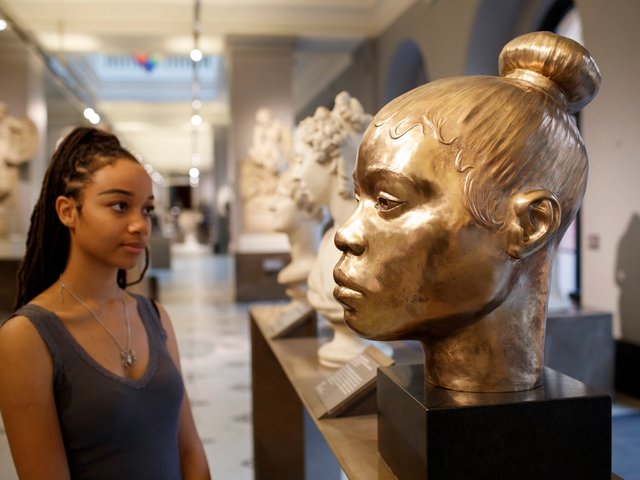The 2025 Art on the Underground programme includes new commissions at London’s Waterloo and Stratford stations, marking the 25th anniversary of the initiative that turns London into a vast public art gallery.
A new piece by the Kurdish artist Ahmet Öğüt is based on the “power of art to save lives”, drawing on the real story of a Rotterdam metro train that was saved from crashing after falling on to a large sculpture of a whale's tail in 2020. Öğüt’s new project, Saved by the Whale’s Tail, Saved by Art, launches mid-March.
“The installation will be at Stratford station for about two years. As part of the project, there will also be an award for the best submission from the public [about how art has saved lives],” Öğüt tells The Art Newspaper.
The artist has created a sculpture similar to a trophy, which will be awarded to the winner later in 2025. The project is produced in collaboration with New Contemporaries, an organisation supporting early-career artists.
Öğüt was last year at the centre of a controversy surrounding his installation Bakunin’s Barricade (2015–22), which is owned by the Stedelijk Museum. Öğüt claimed that a request to loan Bakunin’s Barricade to Gaza protesters was denied by the Amsterdam museum.
Other 2025 commissions include a new audio work produced by the composer Rory Pilgrim. Created in partnership with the Mayor of London’s Culture and Community Spaces at Risk programme, the work will be aired in July on the moving walkway connecting the Northern and Jubilee lines at Waterloo station.
Meanwhile, London-based Rudy Loewe will unveil a new mural at Brixton underground station in November, and the spring 2025 pocket Tube map will feature a new work by the Hungarian-born artist Agnes Denes.
Existing works in the programme can still be seen at some London underground stations, including Monster Chetwynd’s 60m-long sculptural installation featuring three-dimensional creatures at Gloucester Road station. Last year the artists Hannah Quinlan and Rosie Hastings unveiled a permanent mosaic, Angels of History, at St James’s Park, London’s only Grade-1 listed station.






